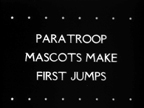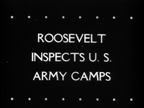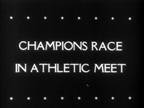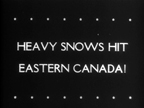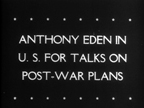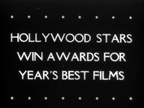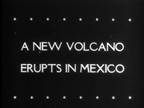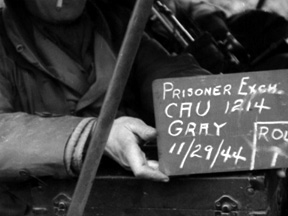 The FilmFileShop collection is made up of more than newsreels. If you imagine the different types of movies as part of a large tree, then the newsreels are part of a major “branch” called documentaries. Although the term “documentary” was not coined until 1926 (attributed to John Grierson), the first “movie goers” witnessed the seeds of the documentary. The titles provide the clues: “Workers Leaving the Lumiere Factory in Lyon” and “Train Arriving at the Station” (both from 1895, by the Lumiere Brothers, France). The very earliest of films also offered scenes from faraway places and events of the day, such as the Coronation of Tsar Nicholas II, 1896, in Russia. The movie camera was capturing “eye witnessed,” live action events and scenes “on location.” Enthusiasm for exotic and novelty “actuality” footage fueled expeditions and adventures.
The FilmFileShop collection is made up of more than newsreels. If you imagine the different types of movies as part of a large tree, then the newsreels are part of a major “branch” called documentaries. Although the term “documentary” was not coined until 1926 (attributed to John Grierson), the first “movie goers” witnessed the seeds of the documentary. The titles provide the clues: “Workers Leaving the Lumiere Factory in Lyon” and “Train Arriving at the Station” (both from 1895, by the Lumiere Brothers, France). The very earliest of films also offered scenes from faraway places and events of the day, such as the Coronation of Tsar Nicholas II, 1896, in Russia. The movie camera was capturing “eye witnessed,” live action events and scenes “on location.” Enthusiasm for exotic and novelty “actuality” footage fueled expeditions and adventures.
“Actuality footage” was part of the typical early movie viewing experience. The first movies were very short, some lasting less than a minute. As the technology improved and the language of film grew it became possible to weave the footage together to tell a story, describe a process, or get a point across.
What is a documentary?
The Academy of Motion Picture Arts and Sciences offers this description: “Documentary films are defined as those that deal with historical, social, scientific, or economic subjects, either photographed in actual occurrence or re-enacted, and where the emphasis is more on factual content than on entertainment.” P. 317 Madsen, The Impact of Film. Many of the titles in the FilmFileShop collection fit under the broad documentary umbrella. There are training films, including selections from World War II and from the NASA Space Program (Jungle Survival Training, for example). There is edited and unedited eyewitness war footage taken by Armed Forces cameramen of the two World Wars, Korea, and Viet Nam. There are titles covering major social and political events of the last century. This film and video material is categorized as “archival” footage. Archival footage is described as motion images and sound that is important to preserve. As you probably know, an institution that protects important documents, including motion pictures, is called an archive. Footage from our collection will be added weekly.
What is a Newsreel? What can they tell us?
As you probably know, newsreels were shown in theaters in the days before television. There were even a few theaters devoted entirely to showing newsreels! Mostly the newsreels were shown as short subjects along with other short subjects and a feature film. The earliest newsreels (Pathe Weekly) shown in the United States were made and distributed by the Pathe Company starting in 1911. Pathe was an international, French company with branches in many countries. The last US newsreel was released in 1967 (Universal News series). In the “Silent Era,” title cards would identify the subject and sometimes comment on the footage. With the sound era, off camera narration and music could be more fully integrated with the moving picture. Typically ranging from five to ten minutes, newsreels presented the “stuff” of our modern day newscasts, internet newsfeeds, tweets, and postings.
Our collection currently features newsreels from the Universal News (200 UN) and United News series (208 UN) as well as moving image records created by the US armed services and many other US government agencies. The United News series was produced during World War II (1942 – 1945) by the Office of War Information (OWI). This material is in the public domain and therefore can be used in your own projects and research, generally without worry about copyright. Please note that proper citation is important. The “provenance” for these clips can be verified, if you have questions, through the National Archives website. In some cases, celebrities and copyrighted music may require that you seek additional permissions for public use.
Newsreels offer us insights into the life, thoughts, events, and material goods of the past. We can see what cars, towns, cities, clothes, celebrities, politicians looked like at different times and places. If we dig a little deeper we can see patterns of opinion and bias. And particularly during war times we can study propaganda and persuasion.

